Section 3: Brain¶

There are several things that need to happen before this board will do anything interesting; power, a soul, and a way to communicate. You've already assembled the power supply, and proven that your board has power.
Now it's time to make that power do something.
Let's take a step back for a minute. What exactly is a computer? What does it do? And how? In its most simple form, a computer is a device that takes an input, processes it, and returns an output.

The LameStation is a very simple computer, containing only a few parts. You'll notice pretty quickly that there seems to be a lot more output things than input things. Well, how much stuff can you really do with your hands?
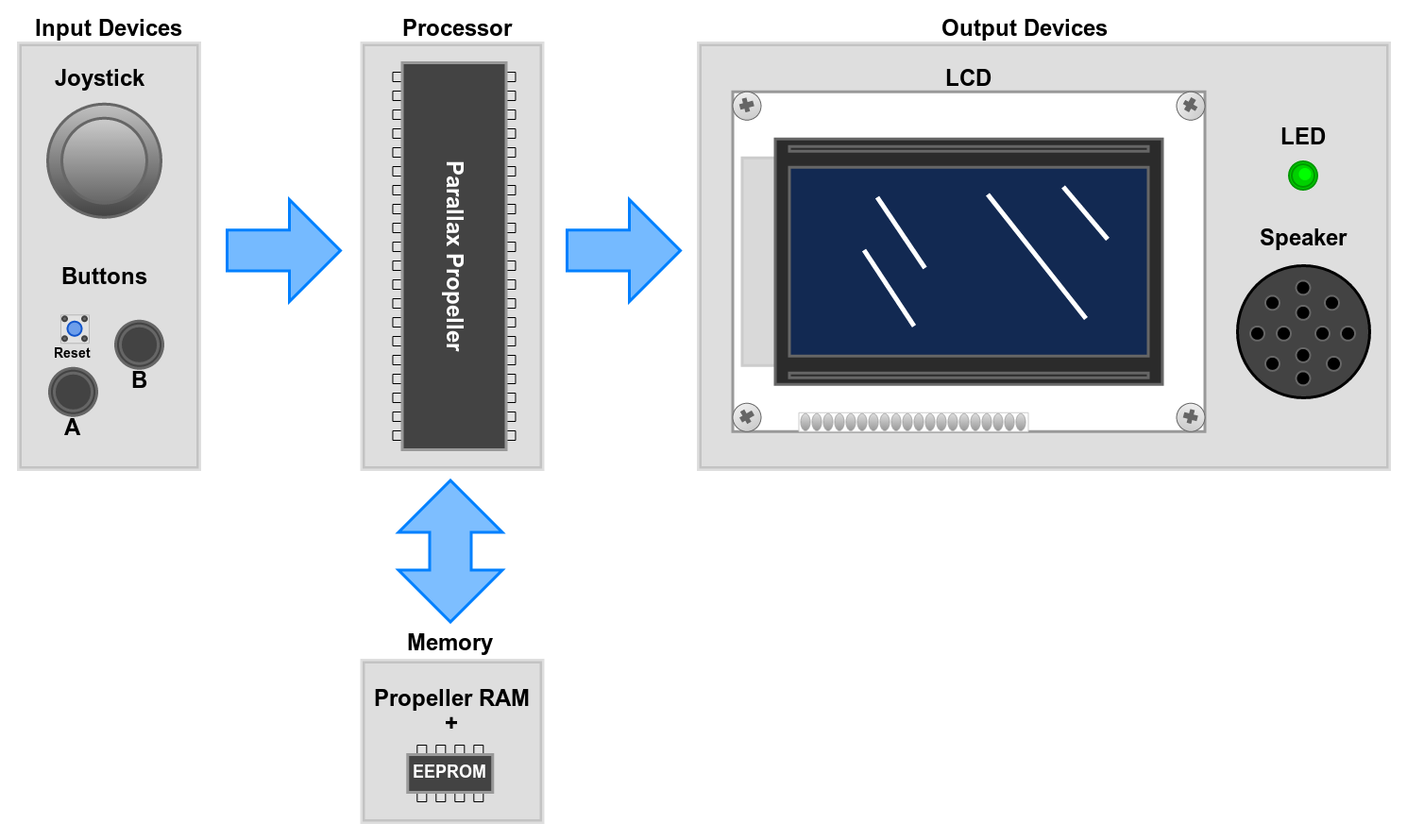
Computers are able to do this because of a beautiful invention called the transistor.
Transistors¶
A transistor is like a tiny switch that can be turned on and off using electricity.
As it turns out, switches can do very simple things like turning a light on and off, to very complex things like math calculations and moving information around.
Integrated Circuits¶
Now take those transistors and multiply them by several million (or in some cases, billion, trillion). Now you have a computer; a vast array of logic switches that all work together to accomplish very sophisticated tasks.
This is how computers can do anything at all. With that many switches though, you can't just wire them together on a table. That'd be pretty freaking ridiculous! That's where integrated circuits come in.
An Integrated Circuit, or IC for short, is a way of packaging an electronic circuit in a very small size, and these small packages can hold many billions of transistors. You will often hear people refer to ICs as computer chips, or just chips.
Sockets¶
Sockets are holders for integrated circuits. By using one, you don't have to worry about overheating the sensitive ICs when you solder them, and it's easy to replace chips if one is damaged. That's why all of the ICs in this kit have sockets.
Remove ICs from their sockets before soldering
This will save you the headache of accidentally burning (or worse, melting) something that you probably would have rather not. Better safe than sorry!
Schematic¶
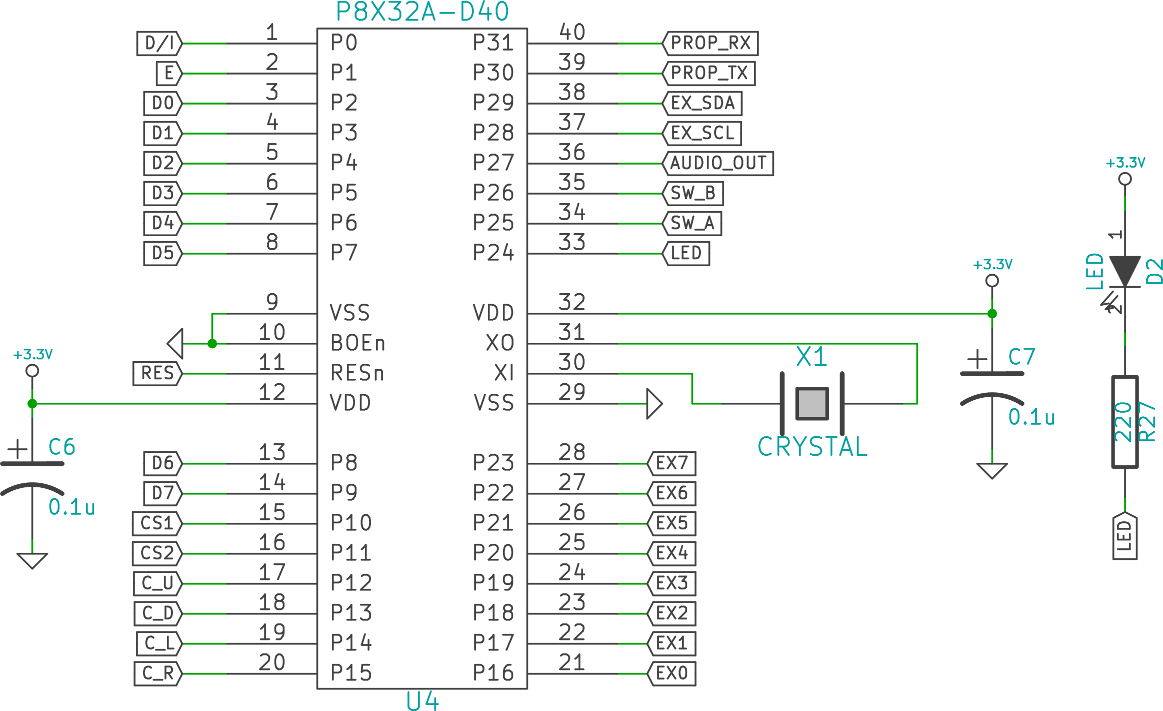
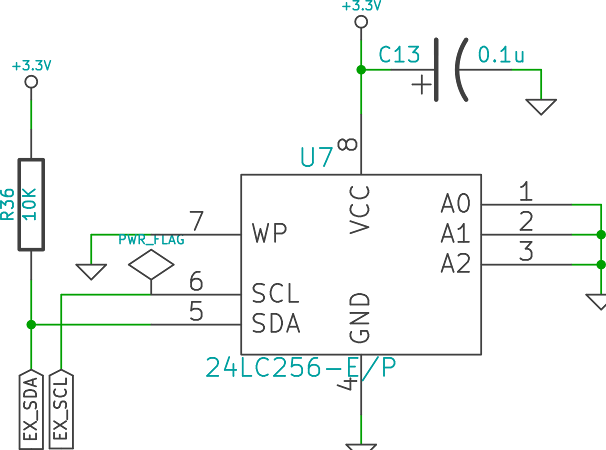
Parts Needed¶
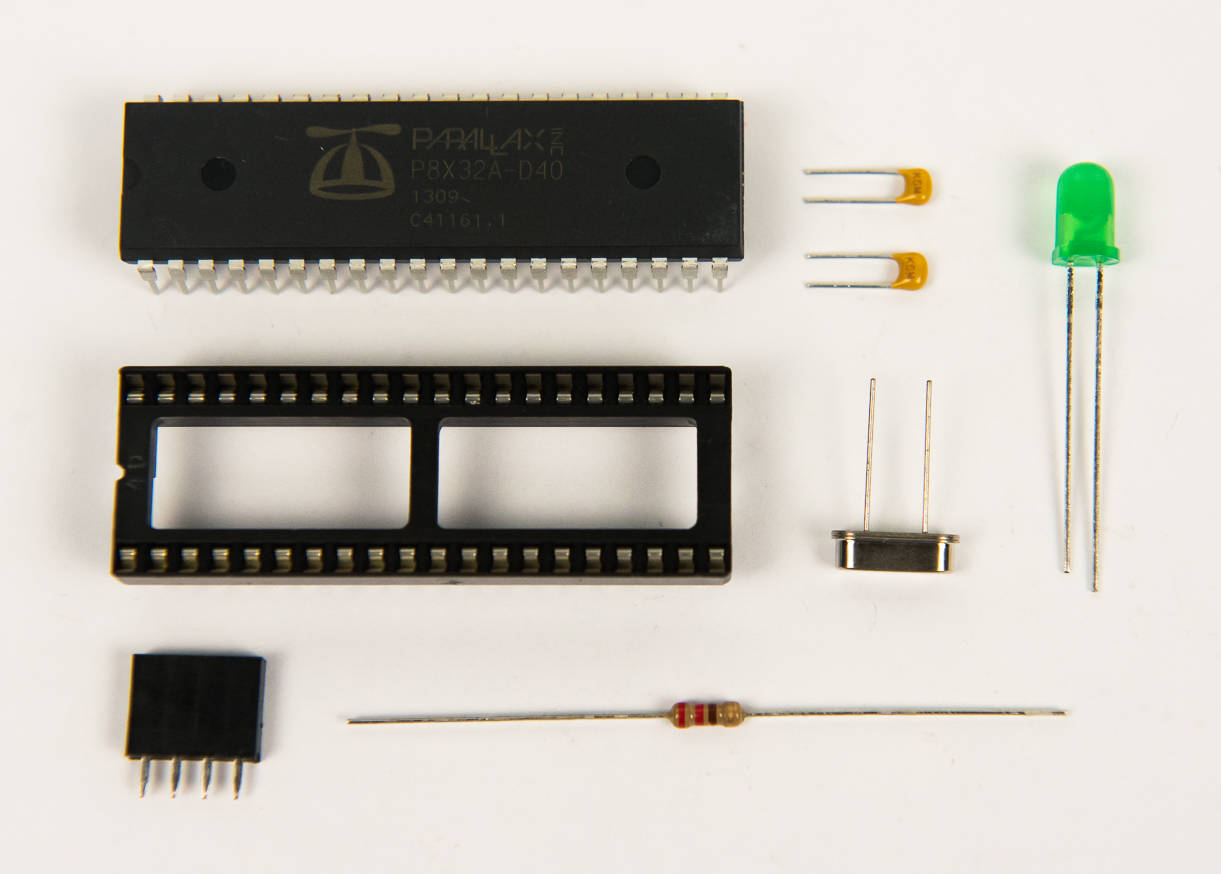
(Top row from left to right)
- 1 x Parallax Propeller microcontroller
- 2 x 0.1μF capacitors
- 1 x Green LED
(Mid row from left to right)
- 1 x 40-pin DIP socket
- 1 x 5MHz crystal oscillator
(Bottom row from left to right)
- 1 x 220Ω resistor
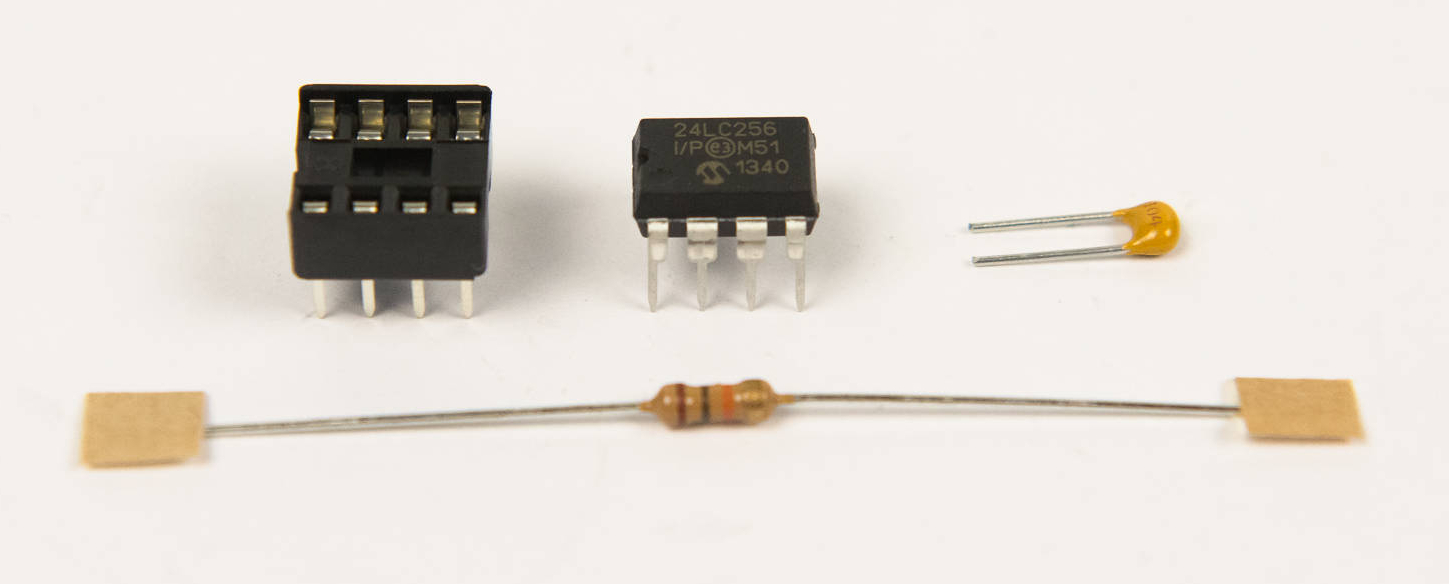
(Top row from left to right)
- 1 x 8-pin DIP socket
- 1 x 24LC256 EEPROM
- 1 x 0.1μF capacitor
(Bottom row)
- 1 x 10kΩ resistor